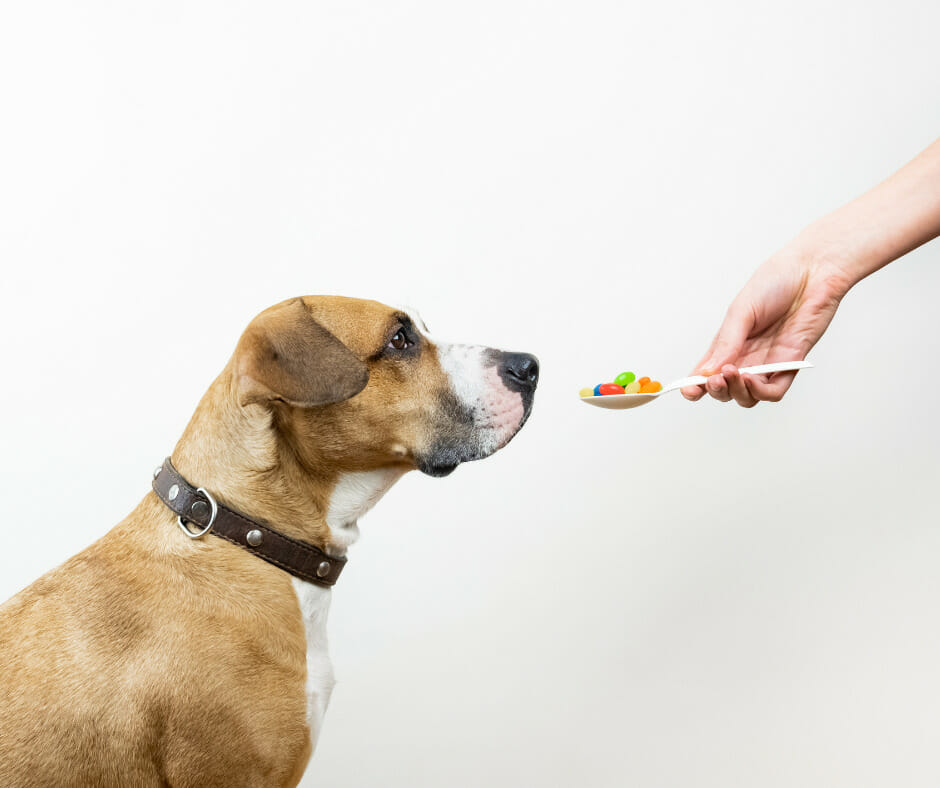Diazepam, commonly known by the brand name Valium, is a medication that plays a significant role in veterinary mental health. It is often prescribed by veterinarians to address various behavioral and mental health issues in dogs. Understanding the function and uses of diazepam in veterinary medicine is crucial for pet owners to make informed decisions about their furry companions’ well-being.
Diazepam belongs to a class of drugs called benzodiazepines and works by enhancing the effects of gamma-aminobutyric acid (GABA), a neurotransmitter that inhibits brain activity. This helps to calm and relax dogs who may be experiencing anxiety disorders, aggression, or seizures.
In veterinary medicine, diazepam is used for several purposes. It is commonly employed in treating anxiety disorders in dogs, helping to alleviate symptoms of extreme fear or phobias. It is also used to manage aggression in dogs that may pose a risk to themselves or others. Diazepam has anticonvulsant properties, making it useful in controlling and preventing seizures in dogs with epilepsy or other seizure disorders.
While diazepam can be beneficial in veterinary mental health, it is essential to consider its safety for use in dogs. Like any medication, diazepam does come with potential side effects, such as sedation, dizziness, and loss of coordination. It is crucial to be aware of these potential side effects and discuss them with your veterinarian.
Proper administration of diazepam to dogs is vital for their well-being. Veterinary guidance is necessary to determine the correct dosage for a dog based on their weight, condition, and other factors. Regular monitoring of a dog’s response to diazepam treatment is also important to ensure its effectiveness and adjust the dosage if necessary. It is also important to consider potential drug interactions, as diazepam can interact with other medications a dog may be taking.
While diazepam can be an effective treatment option, there are alternatives to consider. Behavioral therapy, including training and desensitization techniques, can help address underlying behavioral issues without medication. Natural remedies, such as pheromone diffusers or herbal supplements, may also be beneficial in some cases.

The Role of Medication in Veterinary Mental Health
The role of medication in veterinary mental health is crucial for the well-being of animals. Active interventions have the potential to greatly improve their mental state and overall quality of life. It is important to consider certain factors when utilizing medication for these purposes:
1. Diagnosis: Accurate diagnosis plays a vital role in determining the appropriate medication. Veterinary professionals carefully assess the behavior, symptoms, and medical history of the animal to make well-informed decisions.
2. Medication options: There are a variety of medications available to address different mental health conditions in animals. These medications are specifically designed to target specific neurotransmitters and physiological processes, aiming to restore balance.
3. Dosage and administration: Determining the correct dosage is of utmost importance and is based on the specific needs and characteristics of the animal. Veterinarians ensure safe and effective administration by taking into account factors such as weight, age, and other relevant considerations.
4. Monitoring and adjustments: Regular monitoring is essential in evaluating the effectiveness of the medication as well as any possible side effects (e.g., bradycardia). Veterinarians may make adjustments to the dosage or even the type of medication to achieve optimal results.
5. Behavioral therapy: Medication is often used in conjunction with behavioral therapy to enhance treatment outcomes. Behavioral interventions assist animals in developing coping skills and reducing stress, complementing the effects of the medication.
Understanding the role of medication in veterinary mental health is crucial for comprehensive animal care. By considering these factors, veterinarians can effectively address the mental health challenges faced by our beloved pets.

What is Diazepam?
Diazepam is a medication used in veterinary medicine to treat anxiety, seizures, and muscle spasms in dogs. It is a type of benzodiazepine drug that increases the activity of the neurotransmitter gamma-aminobutyric acid (GABA) in the brain, promoting relaxation and calmness in dogs.
The medication is commonly prescribed to dogs for various purposes. It can be used to relieve anxiety and fear during stressful situations like thunderstorms or fireworks, as well as a sedative before medical procedures or surgeries. Diazepam can also treat seizures and muscle spasms in dogs.
When giving diazepam to dogs, follow the veterinarian’s dosage instructions. The dosage may vary based on the dog’s size and condition. It’s important to note that diazepam should not be used without veterinary guidance, as misuse or overdose can have adverse effects.
Proper dosage and veterinary guidance are essential when using diazepam for dogs. Avoid using this medication without professional advice, as it may lead to unintended consequences.
How does Diazepam work?
Diazepam, a benzodiazepine medication, exerts its effects in veterinary medicine by enhancing the actions of GABA, a key neurotransmitter in the brain. This augmentation leads to a soothing and sedating outcome. Veterinarians employ diazepam to address anxiety disorders, handle aggression, and regulate seizures in animals. To ensure both safety and effectiveness, it is vital to utilize diazepam under the guidance of a veterinary professional who can oversee the dosage and monitoring process. While diazepam is beneficial, it is also important to consider alternative options from experts such as behavioral therapy and natural remedies. Consulting with a veterinarian is crucial in determining the most suitable treatment plan for each individual case.

Uses of Diazepam in Veterinary Medicine
In the fascinating world of veterinary medicine, Diazepam holds great potential as a versatile medication. In this section, we’ll uncover the various uses and applications of Diazepam that have gained attention in the field. From treating anxiety disorders to managing aggression and controlling seizures, we’ll explore the incredible impact this medication can have on enhancing the mental health and well-being of our beloved furry friends. So, let’s dive into the remarkable ways Diazepam is transforming veterinary care!
1. Treating Anxiety Disorders
Treating anxiety disorders in dogs is crucial for their overall well-being. Veterinarians utilize behavioral therapy as one approach to modify behavior and effectively manage anxiety. To help dogs cope with their anxieties and display desirable behaviors, positive reinforcement techniques such as rewards and praise are employed. In certain cases, medication like diazepam may be recommended to alleviate symptoms. It is of utmost importance to seek guidance from a veterinarian to determine the appropriate dosage, monitor the response, and consider potential side effects. Pet owners can play an active role by considering these treatment options and working closely with their veterinarian, ensuring the best course of action for their dog’s well-being and quality of life.
2. Managing Aggression
Diazepam effectively manages aggression in dogs by reducing anxiety and calming their behavior. Diazepam is a reliable treatment for managing aggression in dogs and helps prevent aggressive outbursts.
It is essential to administer Diazepam at the correct dosage prescribed by a veterinarian, taking into consideration the dog’s size, weight, and aggression issues. Consulting a veterinarian is crucial for obtaining proper dosage instructions, understanding potential side effects, and taking necessary precautions when using Diazepam to manage aggression in dogs. It is important to be aware of potential side effects such as drowsiness, sedation, and behavioral changes, and promptly report any concerning side effects to a veterinarian.
In addition to medication, incorporating behavioral therapy can address underlying causes of aggression and teach alternative coping mechanisms. When managing aggression, it is important to assess each dog’s specific needs to tailor the approach accordingly. Regular check-ups with a veterinarian are necessary to ensure the effectiveness of the treatment plan and make any necessary adjustments.
Like other medications, for example, methadone and benzodiazepines, it is crucial to never administer Diazepam or any medication to a dog without veterinary guidance. This is to avoid harmful effects and properly address the underlying causes of aggression.
3. Controlling Seizures
Controlling seizures in dogs is crucial for their overall health and well-being. When managing seizures with diazepam, it is important to follow these steps:
- Consult a veterinarian: It is essential to consult with a veterinarian who can diagnose the seizures and determine the most appropriate treatment plan for controlling seizures in dogs.
- Determine the dosage: The veterinarian will calculate the correct diazepam dosage based on factors such as the dog’s weight, seizure severity, and individual response to ensure effective control of seizures.
- Choose the administration method: Diazepam can be administered orally, intravenously, or rectally. The veterinarian will determine the best method for the dog’s condition and needs to effectively control seizures.
- Monitor the dog’s response: Regularly monitoring the frequency and severity of seizures, as well as any potential side effects, is crucial in controlling seizures effectively.
- Make adjustments if necessary: If seizures are not adequately controlled or if the dog experiences adverse effects, the veterinarian may need to adjust the dosage or explore alternative treatments to ensure proper control of seizures.
Controlling seizures in dogs requires ongoing veterinary guidance and supervision. Veterinarians play a vital role in ensuring the safety and effectiveness of the treatment plan for controlling seizures. They have the expertise to determine the appropriate use of diazepam and make necessary adjustments to optimize seizure control. By following veterinary guidance, dogs with seizures can improve their quality of life and reduce the risk of complications.
Is Diazepam Safe for Dogs?
Wondering if Diazepam is safe for your furry friend? Let’s dive into the world of canine medication and explore the potential side effects and precautions associated with Diazepam for dogs. Discover how this medication plays a vital role in maintaining the mental health of our beloved pets. Buckle up, we’ll be shedding light on the safety concerns and necessary precautions you should be aware of when considering Diazepam for your canine companion.
1. Potential Side Effects
The potential side effects of diazepam in dogs should be carefully considered. Diazepam is generally safe and effective, but it can have adverse effects. It is important to be aware of these potential side effects for the safety and well-being of your pet.
1. Sedation: One common side effect of diazepam is sedation. Dogs may become drowsy or lethargic after taking the medication. They may appear sleepy or less alert.
2. Loss of coordination: Diazepam can affect a dog’s motor skills and coordination, resulting in unsteady movements or difficulty walking. It is important to closely monitor your dog and provide a safe environment to prevent accidents.
3. Increased appetite: Some dogs may experience an increase in appetite after taking diazepam, which can lead to weight gain if not managed properly. It is important to maintain a balanced diet and monitor portion sizes to prevent excessive weight gain.
4. Gastrointestinal effects: Diazepam can occasionally cause gastrointestinal upset in dogs, leading to nausea, vomiting, or diarrhea. Keeping your dog hydrated and providing a bland diet can help alleviate these symptoms.
Before administering diazepam to your dog, consult with a veterinarian to discuss the potential side effects and determine if it is the appropriate treatment. Veterinarians can provide guidance on dosage, monitoring, and any precautions or contraindications that may apply to your dog’s specific situation.
Diazepam was first synthesized by Leo Sternbach and his team at Hoffmann-La Roche in 1963. It quickly gained popularity as a valuable medication in human medicine for its anxiolytic, sedative, and anticonvulsant properties. Diazepam was later introduced for use in dogs, recognizing its potential benefits in veterinary medicine. Extensive research and clinical experience have helped veterinarians understand its efficacy and safety profile over the years. Today, diazepam continues to play a significant role in veterinary mental health, providing relief to dogs suffering from anxiety disorders, aggression, and seizures while being closely monitored for potential side effects.
2. Precautions and Contraindications
When using Diazepam in veterinary medicine, it is important to be aware of the precautions and contraindications associated with this medication. Take into consideration the following factors:
- Age: Exercise caution when administering Diazepam to very young or old dogs, as they may have increased sensitivity to the medication.
- Medical conditions: Dogs suffering from liver or kidney disease, respiratory problems, or glaucoma may not be appropriate candidates for Diazepam. It is advisable to consult with a veterinarian to evaluate the potential risks and benefits.
- Drug interactions: Diazepam can potentially interact with pain relievers, muscle relaxants, or sedatives. It is crucial to inform the veterinarian about all medications your dog is currently taking to avoid any potential interactions.
- Allergies: If your dog has a known allergy to Diazepam or similar medications, it is essential not to administer it.
- Pregnancy and lactation: Caution should be exercised when using Diazepam in pregnant or nursing dogs, as it may have an impact on the puppies.
- Driving or operating machinery: Diazepam may cause drowsiness or sedation in dogs. It is important to exercise caution when using it in working or performance dogs.
Remember to always consult with a veterinarian before giving Diazepam to your dog. They can provide specific guidance based on your dog’s individual needs and medical history.
How is Diazepam Administered to Dogs?
Diazepam is used to treat anxiety, seizures, and muscle spasms in dogs. Here is a guide on how to administer diazepam to dogs:
- Consult your veterinarian: Before giving any medication to your dog, consult a veterinarian. They will prescribe the appropriate dosage and provide specific instructions based on your dog’s needs.
- Prepare the diazepam: Diazepam comes in tablets, liquids, and injectables. Follow the veterinarian’s instructions to prepare the medication.
- Administer orally: If the diazepam is in tablet form, give it directly to your dog or hide it in a treat to help them swallow it. Make sure your dog takes the full dose as prescribed.
- Administer intranasally or rectally: In some cases, diazepam may need to be given through the nose or rectum. The veterinarian will provide instructions on how to do this safely and effectively.
- Observe your dog: After giving diazepam, closely watch for any adverse reactions or side effects. Report any unusual symptoms to your veterinarian immediately.
Pro-tip: Always follow your veterinarian’s instructions exactly when giving diazepam to your dog. Avoid changing the dosage or frequency without their guidance, as it can have unintended consequences on your dog’s health and well-being.
The Importance of Veterinary Guidance
Veterinary guidance is crucial when it comes to Diazepam for dogs. In this section, we’ll explore two key aspects: proper dosage and monitoring, and potential drug interactions. From ensuring the right amount of medication to monitoring its effects, we’ll uncover the vital role that veterinary professionals play in safeguarding the mental health of our furry friends. Additionally, we’ll delve into the potential risks and precautions associated with drug interactions, highlighting the importance of expert guidance in keeping our beloved pets safe and healthy.
1. Proper Dosage and Monitoring
A study has found that “dogs prescribed fluoxetine at daily doses of 0.5–0.99 mg/kg and 1.0–1.49 mg/kg had higher positive response rates (63% and 64%, respectively) compared to dogs prescribed 1.5–1.99 mg/kg daily (31%)” (Efficacy of fluoxetine for canine behavioral disorders, Chutter et al., 2019.) When administering Diazepam to dogs, it is essential to ensure proper dosage and monitoring for their safety and well-being. Here are some crucial points to consider:
1. Consult a veterinarian: Seek professional guidance before giving any medication to your dog. Veterinarians can determine the appropriate dosage based on your dog’s specific needs and health condition.
2. Accurate dosing: Follow the recommended dosage provided by your veterinarian. The dosage for Diazepam in dogs can vary depending on factors such as weight, age, and the condition being treated.
3. Use a syringe or measuring device: Measure the medication precisely using a syringe or measuring device provided by your veterinarian to ensure accuracy. Avoid estimating or using household spoons to prevent under or overdosing.
4. Monitoring and observation: After giving Diazepam, closely observe your dog for any potential side effects, changes in behavior, or adverse reactions. If you notice anything concerning, contact your veterinarian immediately.
Pro-tip: Keep a record of the dosage administered and any observations you make. This will help you and your veterinarian track the effectiveness and potential side effects of the medication, ensuring the overall well-being of your furry companion.
2. Potential Drug Interactions
Diazepam use in veterinary medicine requires caution due to its potential for drug interactions. These interactions have the potential to affect the effectiveness and safety of the medication, leading to adverse effects.
- Combining Diazepam with other benzodiazepines can result in intensified sedative effects and an increased risk of respiratory depression.
- Drugs that depress the central nervous system, such as opioids or barbiturates, have the potential to enhance the sedative effects of Diazepam.
- The combination of Diazepam and antihistamines can lead to excessive sedation and drowsiness.
- When used in conjunction with other anticonvulsant medications, Diazepam may increase the risk of side effects such as drowsiness or ataxia.
Consulting a veterinarian is crucial before administering Diazepam to a pet, especially if the pet is already taking other medications. The veterinarian will assess potential drug interactions and evaluate the risk-benefit ratio to ensure the treatment’s safety and effectiveness.
There have been cases where unintentional combinations of Diazepam with other medications have resulted in increased sedation and even respiratory depression in pets. To prevent such incidents, it is essential to inform the veterinarian about all current pet medications, including over-the-counter drugs or supplements. By working together with the veterinarian, the safe use of Diazepam can be ensured, and the risk of potential drug interactions can be reduced.

Alternatives to Diazepam
Packer et al., write in Investigating the potential of the anti-epileptic drug imepitoin as a treatment for co-morbid anxiety in dogs with idiopathic epilepsy that fear and anxiety issues have been observed in dogs diagnosed with idiopathic epilepsy (IE), both in dogs that have not been exposed to medication and those that have undergone treatment with anti-epileptic drugs (AEDs). Addressing anxiety-related behaviors in IE-affected dogs presents difficulties because numerous typical anxiety-reducing medications are not recommended for patients prone to seizures.
Looking beyond Diazepam, let’s explore some effective alternatives for addressing canine mental health. In this section, we’ll uncover two key approaches. First, we’ll delve into the power of behavioral therapy in promoting balanced behavior and emotional well-being for our four-legged friends. Then, we’ll take a dive into the world of natural remedies, discovering nature’s own solutions to support and calm our beloved pets. So, let’s find the best path forward, ensuring the utmost care for our furry companions.
1. Behavioral Therapy
Behavioral therapy is a vital component in addressing mental health issues in dogs. When considering this type of therapy and experts like those at Lantana Recovery, leading South Carolina’s drug rehab, there are several key points to keep in mind.
First, it is essential to identify the specific problem behaviors that need to be addressed, such as aggression, anxiety, excessive barking, or destructive behavior. Once these behaviors have been identified, it is important to create a structured environment that can help manage and modify them. This involves establishing routines, and consistent rules, and providing both mental and physical stimulation for the dog.
Positive reinforcement is also crucial in this type of therapy. By encouraging desired behaviors through rewards, such as treats, praise, or playtime, dogs can learn to associate these behaviors with positive outcomes. Additionally, focusing on training and socialization is important. Through training, dogs can learn basic commands, while socialization exposes them to different environments, people, and animals, thereby reducing fear or aggression.
Consistency and patience should also be prioritized throughout the therapy process. Changing behavior takes time, so it is important to remain consistent and patient, supporting the dog as they go through the necessary changes.
Pro-tip: Consult with a professional dog trainer or behaviorist to enhance the effectiveness of the therapy. These professionals can provide personalized guidance and techniques that are tailored to the specific needs of your dog, ultimately achieving the best results.
2. Natural Remedies
Natural remedies can be a good alternative to medication for treating certain conditions in dogs. Here are some natural remedies that can improve your dog’s well-being:
1. Herbal supplements: Chamomile and lavender have a calming effect on dogs, reducing anxiety and stress.
2. Essential oils: Lavender and frankincense can create a calming environment for your dog. However, dilute the oils properly and avoid direct application to your dog’s skin.
3. Homeopathic remedies: Rescue Remedy can help alleviate anxiety and promote relaxation in dogs.
4. Dietary changes: Certain food ingredients like turkey and oats contain natural compounds that can have a calming effect on dogs. Adding these ingredients to your dog’s diet can promote well-being.
It’s important to consult with a veterinarian before trying any natural remedy to ensure it is safe and suitable for your dog’s specific needs.
Frequently Asked Questions
What is the dosage of diazepam for dogs?
The dosage of diazepam for dogs varies based on their weight and the condition being treated. It is typically prescribed as 0.25 to 1 mg per pound for dogs. Consult with a veterinarian to determine the appropriate dosage for your dog.
Can diazepam be used to treat loss of appetite in dogs?
Yes, diazepam can sometimes be used in cats to increase appetite. However, it is important to consult with a veterinarian before using diazepam for this purpose in dogs, as there may be other underlying causes for the loss of appetite.
What is an extra-label drug and how is diazepam considered one?
An extra-label drug is a medication that is used in a manner not specifically approved by the FDA. Although diazepam is not specifically approved for use in animals, it can be legally prescribed as an extra-label drug by a veterinarian.
Can diazepam cause liver problems in cats?
In rare cases, diazepam can cause severe liver problems in cats. It is important to monitor your cat for any signs of liver problems while on diazepam and consult with a veterinarian if you notice any changes in their health.
Is diazepam a controlled substance?
Yes, diazepam is a controlled substance and is strictly regulated by the FDA and DEA. It is classified as a benzodiazepine and can only be obtained with a prescription from a veterinarian.
Can diazepam be used in dogs for anxiety?
Yes, diazepam can be used in dogs as an anti-anxiety medication. It works by increasing the levels of gamma-aminobutyric acid (GABA) in the brain, which helps to block neurotransmitters that cause excitement. It is important to consult with a veterinarian before using diazepam for anxiety in dogs.









